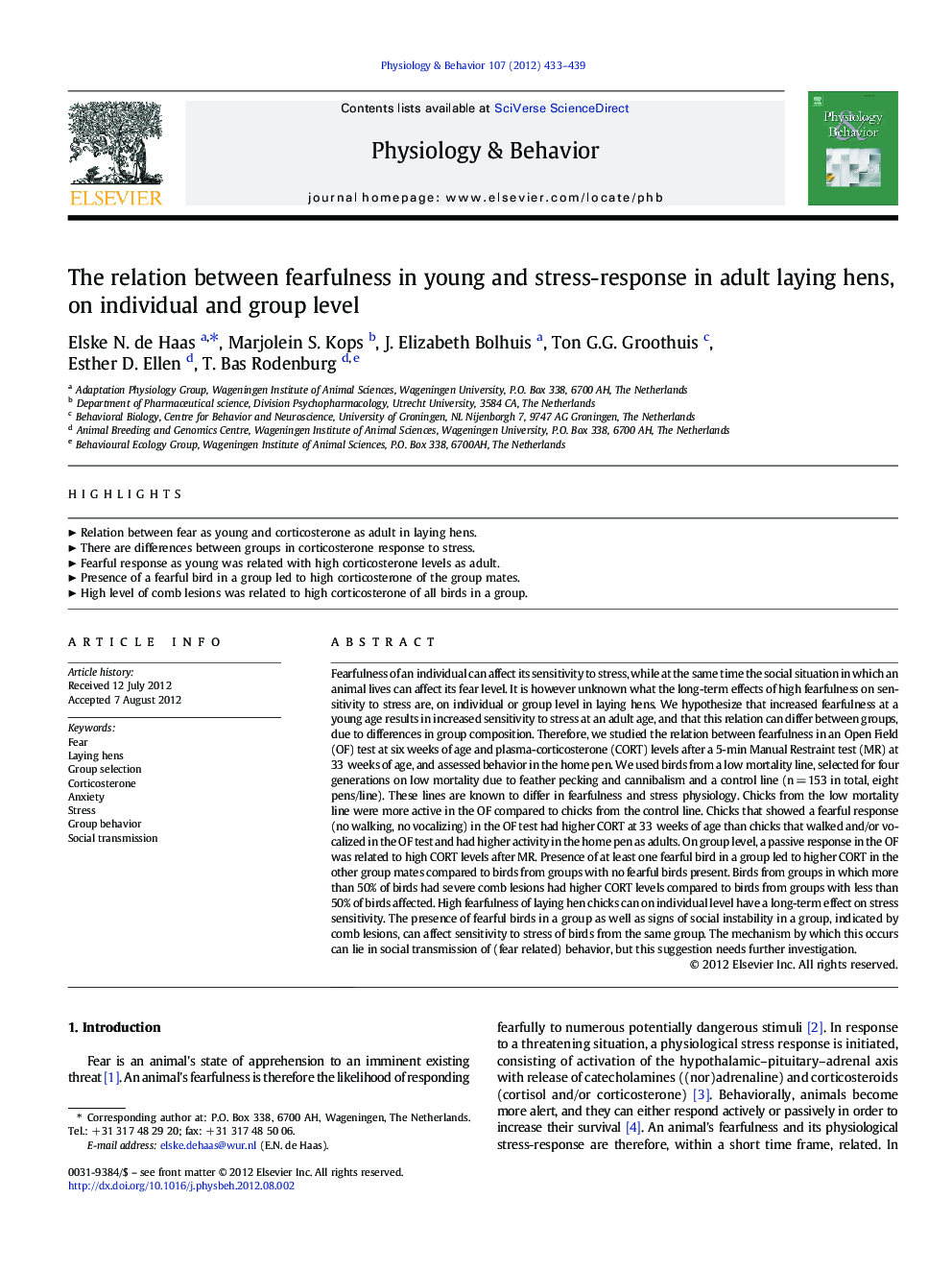| کد مقاله | کد نشریه | سال انتشار | مقاله انگلیسی | نسخه تمام متن |
|---|---|---|---|---|
| 5925185 | 1166343 | 2012 | 7 صفحه PDF | دانلود رایگان |

Fearfulness of an individual can affect its sensitivity to stress, while at the same time the social situation in which an animal lives can affect its fear level. It is however unknown what the long-term effects of high fearfulness on sensitivity to stress are, on individual or group level in laying hens. We hypothesize that increased fearfulness at a young age results in increased sensitivity to stress at an adult age, and that this relation can differ between groups, due to differences in group composition. Therefore, we studied the relation between fearfulness in an Open Field (OF) test at six weeks of age and plasma-corticosterone (CORT) levels after a 5-min Manual Restraint test (MR) at 33 weeks of age, and assessed behavior in the home pen. We used birds from a low mortality line, selected for four generations on low mortality due to feather pecking and cannibalism and a control line (n = 153 in total, eight pens/line). These lines are known to differ in fearfulness and stress physiology. Chicks from the low mortality line were more active in the OF compared to chicks from the control line. Chicks that showed a fearful response (no walking, no vocalizing) in the OF test had higher CORT at 33 weeks of age than chicks that walked and/or vocalized in the OF test and had higher activity in the home pen as adults. On group level, a passive response in the OF was related to high CORT levels after MR. Presence of at least one fearful bird in a group led to higher CORT in the other group mates compared to birds from groups with no fearful birds present. Birds from groups in which more than 50% of birds had severe comb lesions had higher CORT levels compared to birds from groups with less than 50% of birds affected. High fearfulness of laying hen chicks can on individual level have a long-term effect on stress sensitivity. The presence of fearful birds in a group as well as signs of social instability in a group, indicated by comb lesions, can affect sensitivity to stress of birds from the same group. The mechanism by which this occurs can lie in social transmission of (fear related) behavior, but this suggestion needs further investigation.
⺠Relation between fear as young and corticosterone as adult in laying hens. ⺠There are differences between groups in corticosterone response to stress. ⺠Fearful response as young was related with high corticosterone levels as adult. ⺠Presence of a fearful bird in a group led to high corticosterone of the group mates. ⺠High level of comb lesions was related to high corticosterone of all birds in a group.
Journal: Physiology & Behavior - Volume 107, Issue 3, 10 October 2012, Pages 433-439